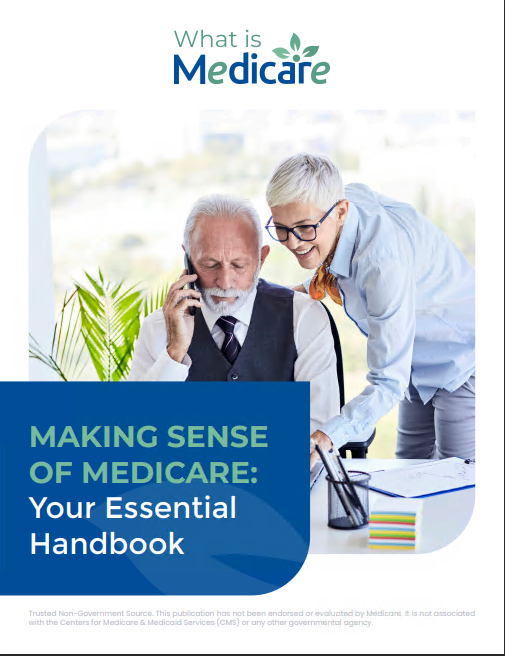Key Takeaways
-
Missing your Medicare enrollment period could lead to permanent late penalties or gaps in coverage. Knowing the different timeframes ensures you sign up at the right time.
-
Special Enrollment Periods (SEPs) allow you to sign up outside the usual timeframes if you meet specific criteria, such as losing employer coverage or moving to a new state.
Understanding the Medicare Enrollment Windows
Medicare enrollment isn’t automatic for everyone, and missing the right sign-up window can mean late penalties or even a delay in coverage. Knowing the key enrollment periods ensures you get the benefits you need without unnecessary costs. Let’s break down the five main Medicare enrollment windows and why each matters.
1. Initial Enrollment Period (IEP)
Your Initial Enrollment Period (IEP) is your first opportunity to sign up for Medicare. This 7-month window surrounds your 65th birthday and is crucial if you don’t have other creditable coverage.
-
Starts 3 months before your 65th birthday
-
Includes the month of your birthday
-
Ends 3 months after your birthday month
Why It Matters
If you don’t enroll during this time and you’re not covered by an employer plan, you could face lifelong penalties on your Part B and Part D premiums. Plus, you might experience gaps in healthcare coverage.
2. General Enrollment Period (GEP)
If you missed your IEP, Medicare gives you another chance. The General Enrollment Period (GEP) happens every year from January 1 to March 31.
-
Coverage starts July 1 of the same year.
-
Late enrollment penalties may apply.
Why It Matters
This is a critical safety net, but it comes with drawbacks—mainly delayed coverage and potential penalties. If you qualify for a Special Enrollment Period (SEP), that may be a better option than waiting for the GEP.
3. Special Enrollment Period (SEP)
Not everyone fits into the standard enrollment windows, and that’s where Special Enrollment Periods (SEPs) come in. These allow you to enroll outside your IEP or GEP if you meet specific conditions.
Common SEP Triggers
-
Losing employer health coverage – You have 8 months after coverage ends to enroll in Medicare.
-
Moving to a new area – If your Medicare Advantage or Part D plan isn’t available in your new location, you qualify for a SEP.
-
Leaving a Medicare Advantage Plan – If you switch back to Original Medicare, you may have a chance to enroll in Part D outside the usual timeframe.
Why It Matters
SEPs prevent coverage gaps and penalties, but they have different rules and deadlines. Always confirm your eligibility with Medicare before assuming you qualify.
4. Medicare Advantage Open Enrollment Period (MA OEP)
Already enrolled in a Medicare Advantage plan but not happy with it? The Medicare Advantage Open Enrollment Period runs from January 1 to March 31 each year.
What You Can Do
-
Switch to a different Medicare Advantage plan (with or without drug coverage)
-
Drop your Medicare Advantage plan and return to Original Medicare
-
Sign up for a standalone Medicare Part D prescription drug plan if switching back to Original Medicare
Why It Matters
You’re limited to one change during this period, so make sure you choose wisely. If you miss this window, you’ll have to wait until the next Annual Enrollment Period to make changes.
5. Annual Enrollment Period (AEP)
Each year, from October 15 to December 7, Medicare gives beneficiaries the chance to change their plans. This is the Annual Enrollment Period (AEP).
What You Can Do
-
Switch between Original Medicare and Medicare Advantage
-
Change your Medicare Advantage plan
-
Join, switch, or drop a Medicare Part D plan
Why It Matters
If you want to make changes to your coverage for the following year, this is the time to do it. Any changes you make take effect on January 1 of the next year.
Avoiding Late Enrollment Penalties
Failing to enroll on time doesn’t just lead to coverage delays—it can also mean permanent penalties on your premiums.
-
Part B Late Enrollment Penalty: You pay 10% more for each full 12-month period you went without Part B coverage.
-
Part D Late Enrollment Penalty: If you go without creditable prescription drug coverage for 63 or more days, you’ll pay an extra amount on your Part D premium for as long as you have Medicare.
Which Enrollment Window is Right for You?
Knowing when to sign up depends on your situation:
-
Turning 65? The Initial Enrollment Period is your first chance.
-
Still working? You may qualify for a Special Enrollment Period after you retire.
-
Already on Medicare? The Annual Enrollment Period lets you adjust your coverage every year.
-
Missed your first chance? The General Enrollment Period is your backup option.
Don’t Miss Your Medicare Enrollment Window
Signing up for Medicare at the right time saves you from unnecessary penalties and gaps in coverage. If you’re unsure which enrollment period applies to you, speaking with a licensed agent listed on this website can help you make the right choice for your healthcare needs.










